Disclosure: This article contains affiliate links. We may earn a commission from purchases at no extra cost to you, which helps our travel content.
The moment my boots touched down on Tongatapu, I knew I'd found a photographer's paradise that few have truly explored. Far from the well-trodden paths of the South Pacific tourist circuit, Tonga's main island offers something increasingly rare in our hyper-documented world – genuinely unspoiled vistas where ancient traditions and natural splendor exist in perfect harmony. As someone who's spent years documenting the world's great open spaces, from Montana's endless grasslands to Mongolia's sweeping steppes, I found myself humbled by the raw authenticity and visual richness of this Polynesian kingdom.
Essential Gear for Tonga's Diverse Environments
Photographing Tonga demands versatility – you'll move from capturing azure lagoons to ancient coral formations to vibrant cultural ceremonies, often within the same day. While my trusty Canon 5D Mark IV handled most situations beautifully, I found myself constantly switching between my 24-70mm for landscapes and a 70-200mm for capturing distant details and candid cultural moments.
The tropical climate presents unique challenges. High humidity means condensation is your constant enemy, especially when moving between air-conditioned accommodations and the warm outdoors. I relied heavily on my silica gel packs tucked into my camera bag to absorb moisture. Similarly, the intense Pacific sun creates harsh contrasts that can ruin otherwise perfect shots. My polarizing filter became indispensable for cutting glare when photographing the crystal-clear waters around Ha'atafu Beach.
Perhaps most crucial was protection from the elements. Unexpected rain showers can appear even during the dry season, and the fine white sand gets everywhere. I wrapped my gear in a waterproof camera cover during sudden downpours and kept a rocket air blower handy for dust removal.
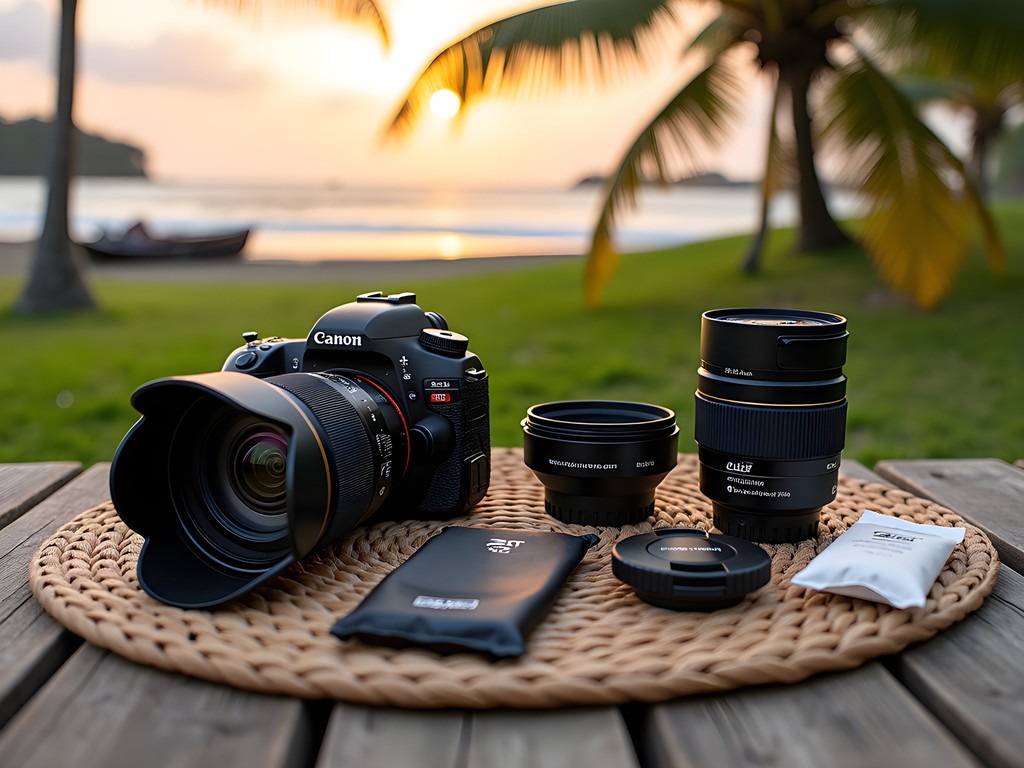
💡 Pro Tips
- Pack twice as many memory cards as you think you'll need – Tonga's photogenic landscapes will fill them quickly
- Bring a circular polarizer for cutting through water glare and enhancing the already-vibrant colors
- Consider a compact drone for aerial shots of the blowholes and coral formations (but always check local regulations first)
The Royal Heartbeat: Photographing Nuku'alofa
Nuku'alofa may lack the postcard perfection of other Pacific capitals, but its authentic character offers something far more valuable to photographers seeking to capture genuine moments. The Royal Palace, with its Victorian architecture set against tropical gardens, creates a compelling visual narrative about Tonga's unique history. While you can't enter the grounds, the best vantage point comes from the waterfront around 4pm when the light softens and casts a golden glow across the white wooden façade.
The Talamahu Market became my morning ritual – arriving by 7am when the light streams through the open-air structure and locals are setting up their stalls. This is where Tonga's soul reveals itself through interactions rather than landscapes. I found that carrying a small instant camera alongside my professional gear helped break the ice with vendors. Offering instant prints as gifts created genuine connections and opened doors to authentic portraits that tell Tonga's human story.
For street photography around Nuku'alofa, I relied on my camera sling strap which allowed me to quickly raise my camera for those fleeting moments – like when I captured children playing rugby in the golden afternoon light, or the unexpected procession of church-goers in their traditional ta'ovala mats that I encountered while turning a random corner.
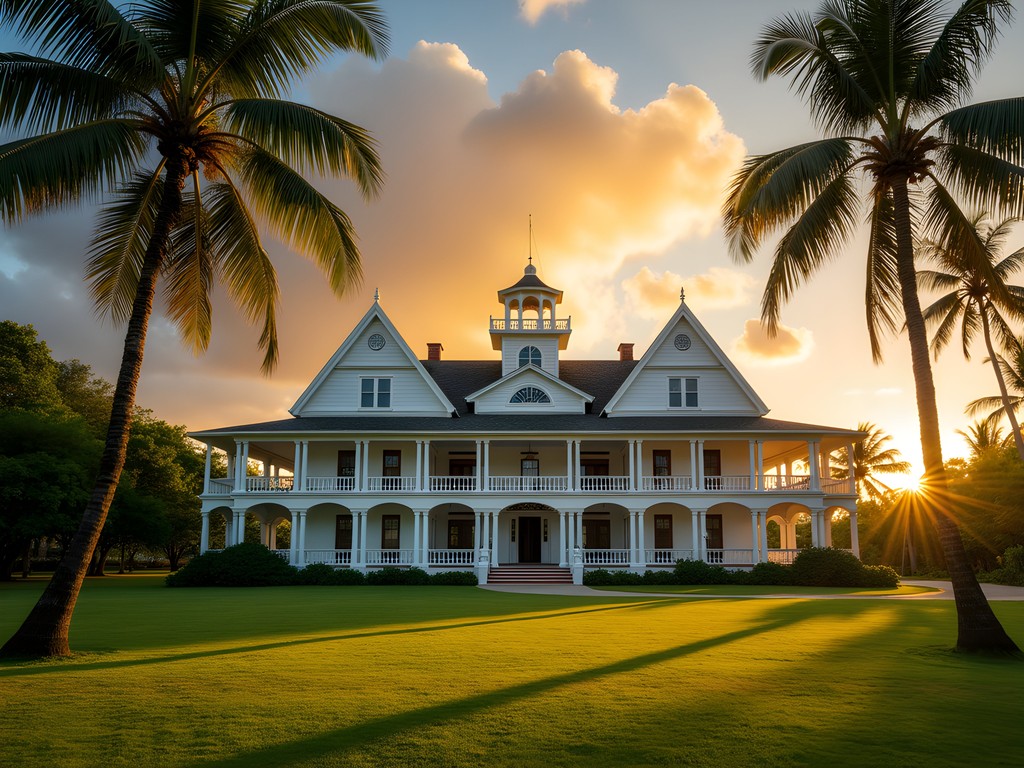
💡 Pro Tips
- Visit the Royal Palace grounds on Sunday afternoons when the changing light creates dramatic shadows across the façade
- Talamahu Market is most photogenic between 7-9am when morning light filters through the open structure
- Always ask permission before photographing people wearing traditional dress – a small Tongan phrase book helps bridge language gaps
Ancient Stone and Sea: Tongatapu's Eastern Treasures
The eastern side of Tongatapu holds some of the island's most photogenic sites, particularly for those drawn to the intersection of human history and natural beauty. The Ha'amonga 'a Maui trilithon (Tonga's Stonehenge) presents fascinating compositional challenges. I found myself returning three separate mornings to capture it properly. The massive coral limestone structures are best photographed in early morning light (6-7am) when the stones glow amber and long shadows create depth. Experiment with positioning – my favorite shots came from lying flat on the ground, shooting upward to emphasize the trilithon's imposing presence against the sky.
Nearby, the terraced tombs of ancient Tu'i Tonga kings (Langi) offer another compelling subject. These stepped pyramid structures tell visual stories of Tonga's ancient power. I found my collapsible reflector invaluable here for filling harsh shadows when photographing the intricate stone details.
The coastal drive along the eastern shore presents constant visual rewards. Pull over anywhere that catches your eye – the contrast between jagged coral formations and turquoise waters creates natural compositions that almost frame themselves. The Hufangalupe natural land bridge was particularly striking at low tide, when tide pools formed perfect mirrors reflecting the stone arch. This is where my graduated ND filter earned its place in my bag, allowing me to balance the bright sky with the darker stone formations.
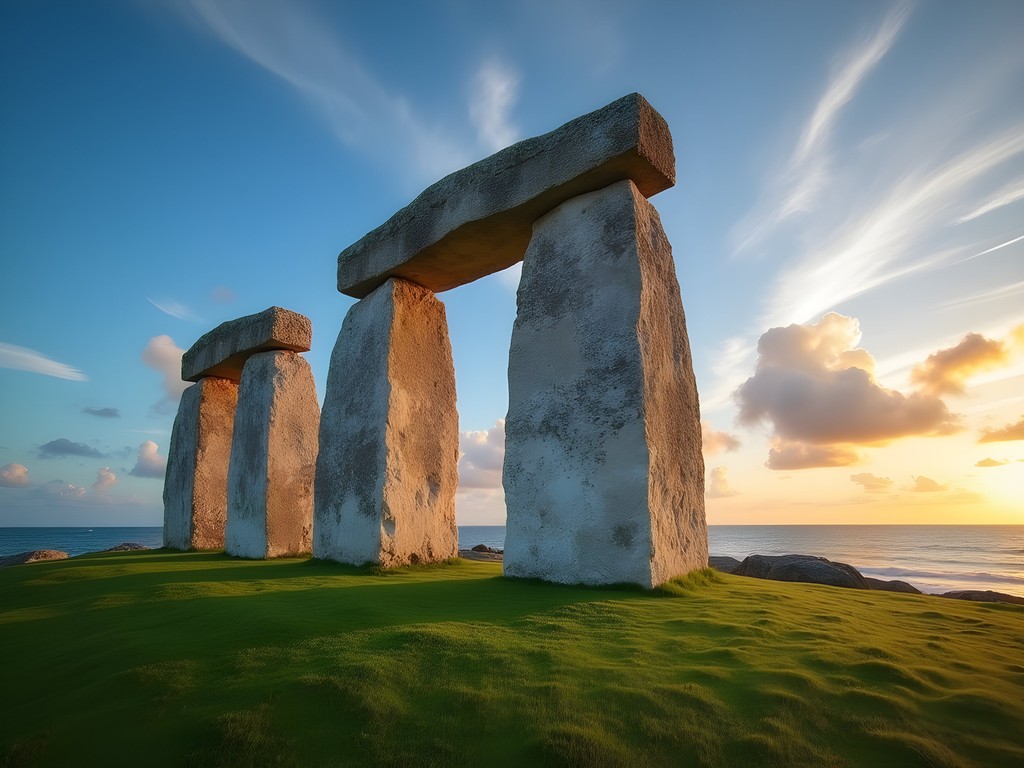
💡 Pro Tips
- Photograph the Ha'amonga 'a Maui trilithon within the first hour after sunrise for magical lighting on the coral limestone
- Use a human subject near ancient structures to establish scale in your compositions
- Consult tide tables before photographing coastal features – many are dramatically different (and more photogenic) at low tide
The Spectacle of Mapu'a 'a Vaea: Timing the Perfect Blowhole Shot
No photographic exploration of Tongatapu would be complete without capturing the raw power of the Mapu'a 'a Vaea blowholes along the southern coast. Here, waves crash into coral reef channels, sending spectacular water spouts up to 30 meters into the air. This natural phenomenon represents one of Tonga's most iconic images, but capturing it effectively requires planning, patience, and the right equipment.
Timing is everything. I monitored swell forecasts using my weather radio throughout my stay, planning my visits when ocean swells were highest. The blowholes are most active 2-3 hours before high tide on days with southern swells – this combination creates the most dramatic displays. I learned this lesson the hard way after an initially disappointing visit during calm seas.
Composition presents interesting challenges here. Wide-angle lenses capture the impressive scale of dozens of blowholes erupting simultaneously, while telephoto zooms isolate individual water spouts against the sky. I alternated between both approaches, often setting up my camera with a fast shutter speed (at least 1/1000s) to freeze the water droplets in mid-air.
The harsh midday light actually works well here, as the bright sun illuminates the water spray, creating rainbow effects. I protected my gear from salt spray with a lens cleaning kit which proved essential after hours near the ocean mist. For those seeking the ultimate blowhole image, consider bringing a wireless remote to trigger your camera from a safe distance while you appear in the frame – providing scale to these massive water displays.
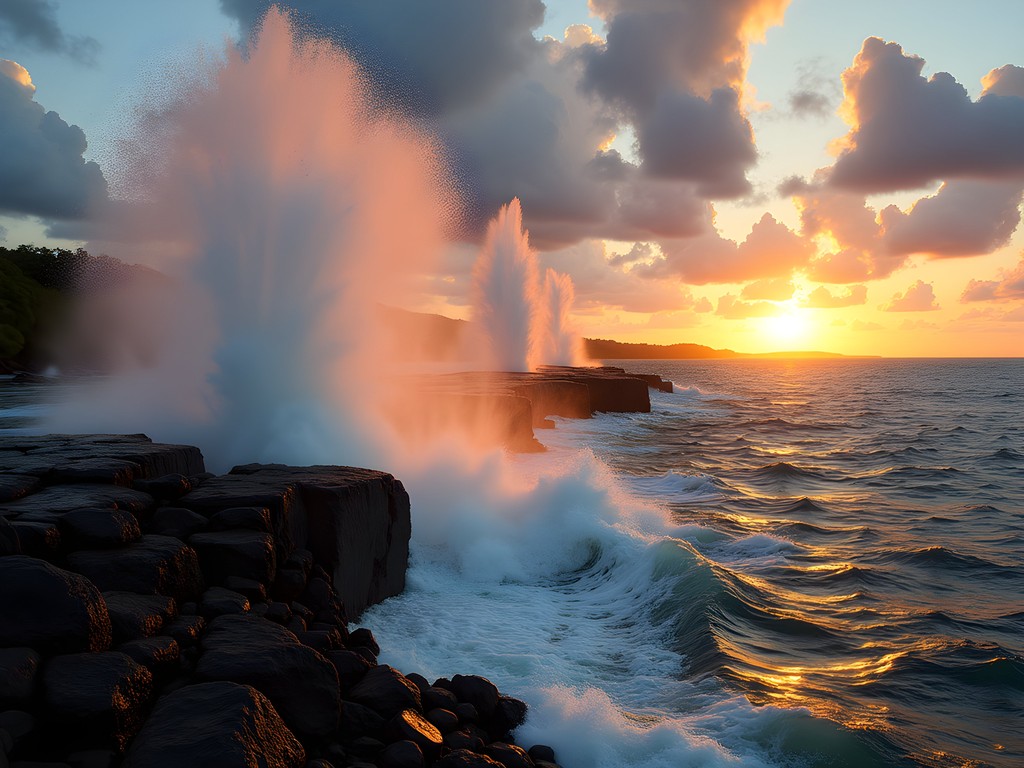
💡 Pro Tips
- Visit the blowholes 2-3 hours before high tide on days with southern swells for maximum activity
- Use fast shutter speeds (1/1000s minimum) to freeze water droplets in mid-air
- Protect your gear from salt spray with regular lens cleaning and a UV filter you can quickly wipe down
Cultural Immersion: Photographing Tongan Life and Traditions
Some of my most treasured images from Tongatapu weren't of landscapes at all, but of the vibrant cultural traditions that continue to thrive across the island. Sunday in Tonga offers a unique photographic opportunity – the nation essentially shuts down for church services, and the sounds of harmonized hymns fill the air. While photographing inside churches requires explicit permission (which I arranged in advance through my guesthouse owner), the moments before and after services provide wonderful opportunities for respectful documentary photography.
The traditional Sunday feast (umu) that follows church presents both culinary and photographic delights. I was fortunate to be invited to a family umu after attending their church service. The preparation of food in underground ovens creates a visual narrative rich with tradition – smoke, earth, and community coming together. When photographing these intimate cultural moments, I switched to a prime lens which allowed me to work in lower light without flash, maintaining the authentic atmosphere.
Tonga's traditional crafts offer another window into cultural photography. The weaving of ta'ovala mats and tapa cloth production continues in villages throughout Tongatapu. I arranged visits through the Tonga Visitors Bureau, where local guides facilitated appropriate photography opportunities. When documenting traditional crafts, I found my LED light panel invaluable for bringing out the intricate details of the weaving process in often dimly-lit indoor settings.
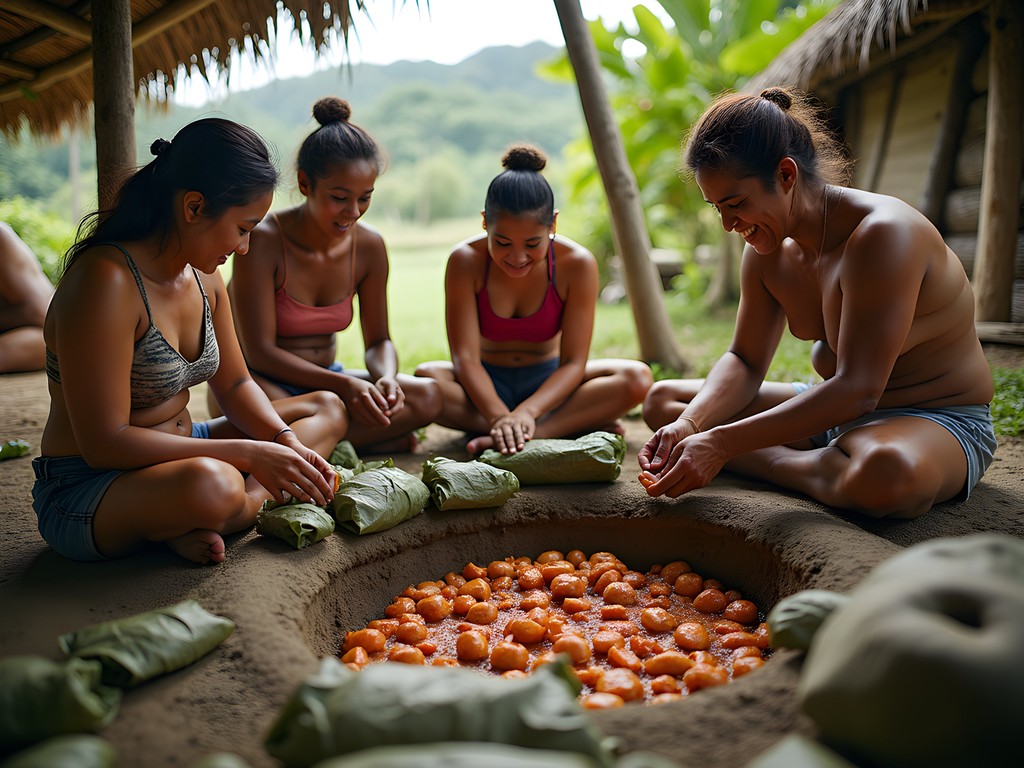
💡 Pro Tips
- Always seek permission before photographing religious ceremonies or inside churches
- Learn basic Tongan phrases to help establish rapport before taking photos of people
- Bring small photo prints from previous travels as gifts when visiting villages – they're much appreciated and help build connections
Final Thoughts
As I packed away my gear on my final evening in Tongatapu, watching another spectacular sunset paint the lagoon in impossible shades of gold and violet, I reflected on how this island had transformed my photographic perspective. In a world increasingly dominated by over-photographed destinations, Tonga offers something precious – authenticity that demands we slow down to truly capture its essence. The technical challenges of shooting in its diverse environments pushed my skills in new directions, while the cultural experiences reminded me why I first picked up a camera on my grandfather's Wyoming ranch all those years ago – to preserve moments of genuine human connection and natural beauty.
Tongatapu won't give up its photographic treasures easily. It requires patience, respect, and a willingness to adapt to island time. But for those willing to invest that effort, it offers visual rewards that few destinations can match in today's world. Whether you're drawn to the raw power of the blowholes, the quiet dignity of ancient stone monuments, or the warmth of Tongan cultural traditions, come with an open heart and plenty of memory cards. This overlooked Pacific kingdom has stories to tell through your lens that deserve to be shared with the world.
✨ Key Takeaways
- The best photography in Tonga happens during the golden hours – plan your shooting schedule around early mornings and late afternoons
- Weather protection for your gear is essential in Tonga's tropical climate and coastal environments
- Cultural photography opportunities abound but always approach with respect and seek permission
- Patience yields rewards – many of Tonga's natural phenomena require waiting for the right conditions
📋 Practical Information
Best Time to Visit
May to October (dry season)
Budget Estimate
$100-150 USD per day including accommodation, car rental, and meals
Recommended Duration
7-14 days
Difficulty Level
Moderate
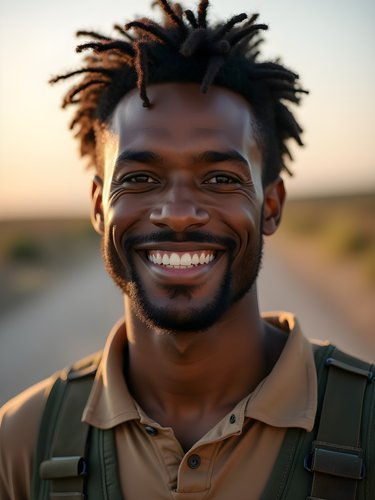

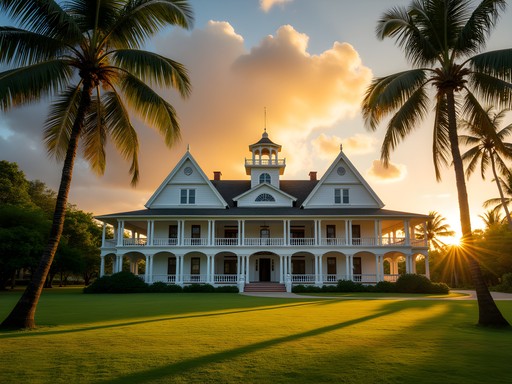
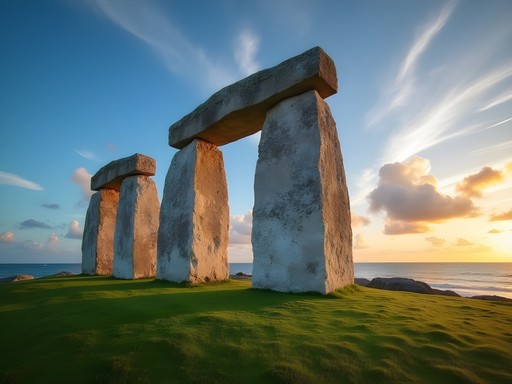
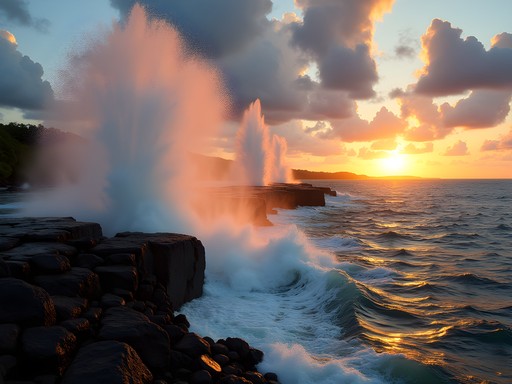
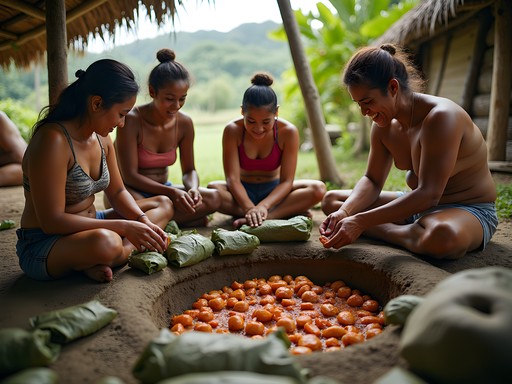


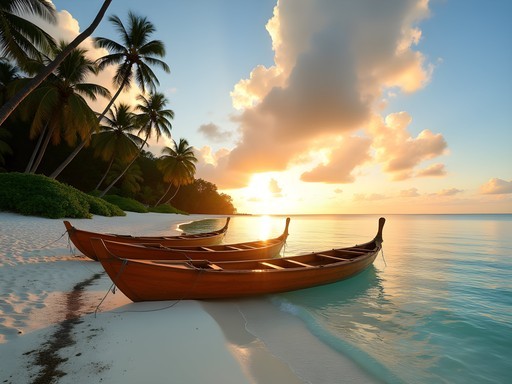

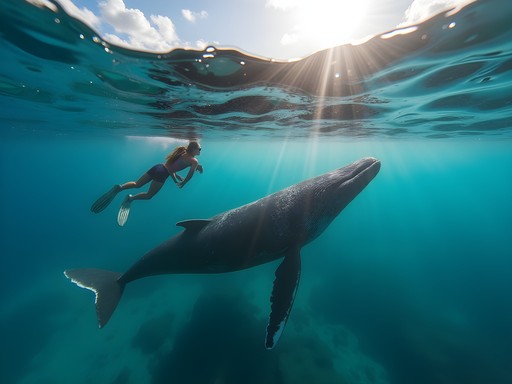



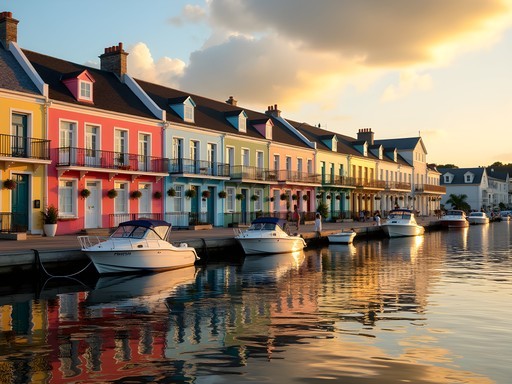
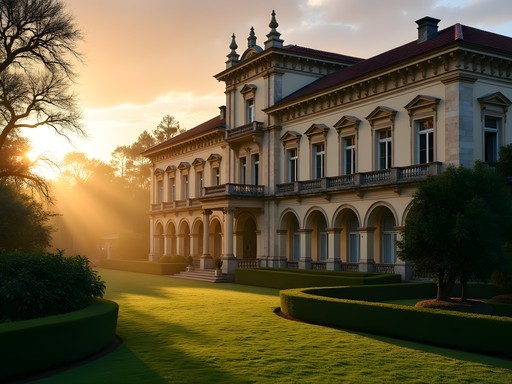
Comments
wildmood
Wow Preston! Your photos of Tongatapu are absolutely STUNNING! I visited last year but my pictures look nothing like yours. That shot of the Ha'amonga 'a Maui trilithon at sunrise literally gave me goosebumps. I struggled with the harsh midday light when I was there. Definitely going to try your tip about shooting during golden hour if I make it back. Did you have any issues with humidity affecting your gear? My lens kept fogging up!
Preston Campbell
Thanks so much, wildmood! The humidity is definitely a challenge. I kept silica gel packets in my camera bag and would let my gear acclimate for about 15 minutes before shooting. Also, a microfiber cloth was my constant companion!
wildmood
That's super helpful! Will definitely try the silica gel packets next time. Never thought of that!
happydiver
Just got back from Tongatapu and used many of these tips! The advice about visiting Mapu'a 'a Vaea blowholes at high tide was perfect - we timed it right and got incredible spray shots. One thing I'd add is to bring more memory cards than you think you need. The light in Tonga is so unique that I found myself shooting way more than usual, especially during those golden hours. The contrast between the volcanic rocks and turquoise water is just unreal. Also found the locals to be incredibly welcoming about photography, but always ask permission before taking portraits. Great guide Preston!
nomadmood
Anyone know if it's worth staying extra days to catch the whale season for photography? Planning my trip timing now.
Preston Campbell
Absolutely! July-October is prime whale season. The humpbacks come to breed in Tonga's waters and you can even book ethical swimming tours. Bring a good waterproof camera!
Adam Nichols
This guide is spot on. I'd emphasize weather protection even more though - I lost a day of shooting when an unexpected rain shower caught me off guard near the Ha'amonga 'a Maui trilithon. The weather patterns in Tongatapu can change rapidly, especially during the wet season. Also worth noting that drone photography, while tempting for those aerial shots, requires permits in Tonga and is restricted in many areas including royal properties and some ceremonial sites. Always check local regulations and be respectful of cultural sensitivities. The Ancient Tonga tour guides can help navigate these restrictions if you ask in advance.
photofanatic
Just got back from Tonga last week and can confirm everything in this guide is spot on. One extra tip: bring more memory cards than you think you'll need! The light there is so unique you'll be shooting way more than expected. Also found that polarizing filters were essential for cutting through water glare at the blowholes.
skyvibes
Love the tips about timing the blowholes! Got soaked trying to photograph them last year lol
skygal
Is it worth bringing an underwater camera? The beaches look amazing!
happydiver
Absolutely! I brought my underwater housing and got some incredible shots of the coral formations. The visibility is incredible, especially at Ha'atafu Beach.
Hannah Woods
Preston, this is exactly the kind of off-the-beaten-path guide I live for! I was in Tongatapu last year and completely agree about the Royal Palace timing - that golden hour light on the red roof is magical. One tip I'd add for fellow photographers: don't miss the flying foxes at Kolovai around dusk. Thousands of fruit bats with 3-4 foot wingspans against the sunset sky make for incredible silhouette shots. Just bring a longer lens than I did - my 70-200mm barely cut it!
Preston Campbell
Thanks Hannah! Great call on the flying foxes - I should have mentioned them. They're absolutely spectacular at dusk.
nomadmood
What settings did you use for those bat shots, Hannah? Heading there next month!
Hannah Woods
I used 1/1000 sec, f/5.6, ISO 800 as they moved pretty fast. Bring a tripod for sure!
oceanqueen
Those sunset shots over the lagoon are absolutely stunning! Adding Tonga to my bucket list right now.
Douglas Bradley
Preston, this is exactly the kind of guide that's missing from most travel photography blogs. I spent three weeks in Tonga last year documenting traditional crafts, and your assessment of the lighting challenges is spot on. The contrast between the bright skies and dark volcanic rock is brutal on exposure settings. For anyone heading there, I'd add that the local markets in Nuku'alofa offer incredible portrait opportunities if you approach people respectfully. Most Tongans I met were happy to be photographed once I explained my project and showed genuine interest in their craft. One technical tip I'd add: the high humidity can cause serious condensation issues when moving between air-conditioned rooms and the outdoors. I started keeping my gear in sealed bags with silica gel packets for about 15 minutes during transitions, which saved me from potentially damaging my sensor. Your compositions of the Ha'amonga 'a Maui trilithon are particularly striking - the way you've captured the texture of the coral limestone against the sky brings out details I completely missed. Looking forward to your next piece!
Preston Campbell
Thanks Douglas! That condensation tip is gold - I had a few close calls myself. Your craft documentation sounds fascinating - is that series published somewhere? Would love to check it out.
Douglas Bradley
Just published on Cultural Lens last month! I'll DM you the link. Your post has me wanting to return and focus more on the natural landscapes next time.
Venture X
Premium card with 2X miles, $300 travel credit, Priority Pass